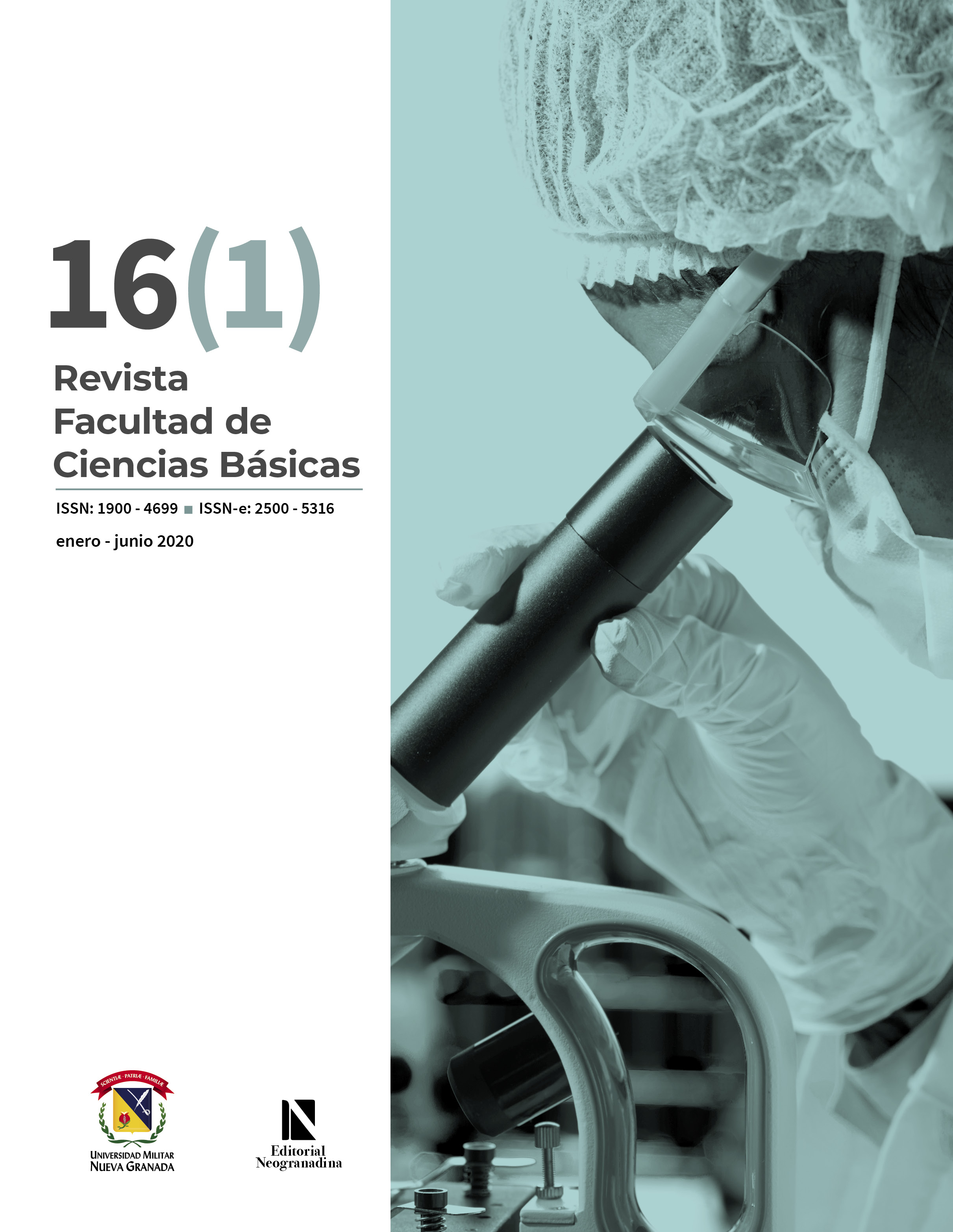Analysis of Strategies for Preventing and Controlling the Chikungunya Virus
Abstract
Alternatives to stop chikungunya outbreaks are oriented to vector control and developing a specific treatment and a preventive vaccine. Environmental control and mosquito bite prevention are undoubtedly essential to decrease the disease burden, but Aedes vectors continue to expand geographically and re-emerge. So, vaccination is proposed to respond to this etiology and recognized as a pressing need for affected countries. A mathematical host-vector model, including asymptomatic population, vector control, and vaccination (assuming the existence of a safe protective vaccine against the chikungunya virus), is suggested to analyze the effects of these efforts. Poisson distribution is applied to interpret the basic reproduction number. Then vaccination and vector control thresholds are established to prescribe the most effective protection measures against exposure to the chikungunya virus. In conclusion, it is advisable to continue with integrated control to reduce the economic impact of relevant public health responses and mitigate other infections since Aedes is a transmitter of other arboviruses such as dengue, Zika, and Mayaro. Furthermore, vaccinating all individuals in a community could be a costly and gradual process.
Downloads
References
P. J. Mason and A. J. Haddow, "An epidemic of virus disease in Southern Province, Tanganyika Territory, in 1952-1953: An additional note on Chikungunya virus isolations and serum antibodies," Trans. R. Soc. Trop. Med. Hyg., vol. 3, no 51, pp. 238-240, 1957, https://doi.org/10.1016/0035-9203(57)90022-6
J. Bettadapura, L. J. Herrero, A. Taylor, and S. Mahalingam, "Approaches to the treatment of disease induced by chikungunya virus," Indian J. Med. Res., vol. 138, no. 5, pp. 762-765, 2013.
C. Maguiña-Vargas, "Fiebre de Chikungunya: Una nueva enfermedad emergente de gran impacto en la salud pública," Rev. Med. Hered., vol. 26, no. 1, pp. 55-59, 2015, https://doi.org/10.20453/rmh.2015.2350
M. Fischer and J. E. Staples, "Chikungunya virus spreads in the Americas-Caribbean and South America, 2013-2014," Morb. Mortal. Wkly. Rep., vol. 63, no. 22, pp. 500-501, 2014.
Ministerio de Salud de la Provincia de Buenos Aires, Participación Social en la prevención del Dengue, Zika y Chikungunya: guía para el Promotor. Buenos Aires, Argentina: Unicef, 2016.
J. Moya, R. Pimentel, and J. Puello, "Chikungunya: un reto para los servicios de salud de la República Dominicana," Rev. Panam. Salud Pública, vol. 36, pp. 331-335, 2014.
J. L. Manzur and C. Fernández de Kirchner, Enfermedades infecciosas. Fiebre Chikungunya. Guía para el equipo de salud Nro, 13. República Argentina: Dirección de Epidemiología-Ministerio de Salud de la Nación, 2015.
J. E. Staples and M. Fischer, "Chikungunya virus in the Americas-what a vector borne pathogen can do," N. Engl. J. Med., vol. 371, no. 10, pp. 887-889, 2014, https://doi.org/10.1056/NEJMp1407698
E. Delisle et al., "Chikungunya outbreak in Montpellier, France, September to October 2014," Eurosurveillance, vol. 20, no. 17, pp. 21108, 2015, https://doi.org/10.2807/1560-7917.ES2015.20.17.21108
L. F. Shalauddin, R. P. Ricketts, T. Christian, K. Polson, and B. Olowokure, "Chikungunya virus outbreak, Dominica, 2014," Emerging Infect. Dis., vol. 21, no. 5, pp. 909-911, 2015, https://doi.org/10.3201/eid2105.141813
S. S. Patil, S. R. Patil, P. M. Durgawale, and A. G. Patil, "A study of the outbreak of Chikungunya fever," J. Clin. Diagnostic Res., vol. 7, no. 6, pp. 1059-62, 2013, https://doi.org/10.7860/JCDR/2013/5330.3061
C. H. Tan et al., "Entomological investigation and control of a chikungunya cluster in Singapore," Vector Borne Zoonotic Dis., vol. 11, no. 4, pp. 383-390, 2011, https://doi.org/10.1089/vbz.2010.0022
A. Farajollahi, S. P. Healy, I. Unlu, R. Gaugler, and D. M. Fonseca, "Effectiveness of ultra-low volume nighttime applications of an adulticide against diurnal Aedes albopictus, a critical vector of dengue and chikungunya viruses," PLoS One, vol. 7, no. 11, pp. e49181, 2012, https://doi.org/10.1371/journal.pone.0049181
G. C. Abramides, D. Roiz, R. Guitart, S. Quintana, I. Guerrero, and N. Giménez, "Effectiveness of a multiple intervention strategy for the control of the tiger mosquito (Aedes albopictus) in Spain," Trans. R. Soc. Trop. Med. Hyg., vol. 105, no. 5, pp. 281-288, 2011, https://doi.org/10.1016/j.trstmh.2011.01.003
J. Raude and M. Setbon, "The role of environmental and individual factors in the social epidemiology of chikungunya disease on Mayotte Island," Health Place, vol. 15, no. 3, pp. 659-69, 2009, https://doi.org/10.1016/j.healthplace.2008.10.009
T. S. Selvavinayagam, "Chikungunya fever outbreak in Vellore, south India," Indian J. Community Med., vol. 32, no. 4, pp. 286-287, 2007, https://doi.org/10.4103/0970-0218.37697
Z. Qiaoli et al., "Maiden outbreak of chikungunya in Dongguan city, Guangdong province, China: epidemiological characteristics," PloS one, vol. 7, no. 8, pp. e42830, 2012, https://doi.org/10.1371/journal.pone.0042830
A. A. Yoosuf et al., "First report of chikungunya from the Maldives," Trans. R. Soc. Trop. Med. Hyg., vol. 103, no. 2, pp. 192-196, 2009, https://doi.org/10.1016/j.trstmh.2008.09.006
J. Raude et al., "Public perceptions and behaviours related to the risk of infection with Aedes mosquito-borne diseases: a cross-sectional study in Southeastern France," BMJ open, vol. 2, no. 6, 2012, https://doi.org/10.1136/bmjopen-2012-002094
K. Vijayakumar, T. S. Anish, K. N. Sreekala, R. Ramachandran, and R. R. Philip, "Environmental factors of households in five districts of Kerala affected by the epidemic of chikungunya fever in 2007," Natl. Med. J. India, vol. 23, no. 6, 2010.
J. Thuilliez, C. Bellia, J. S. Dehecq, and O. Reilhes, "Household-level expenditure on protective measures against mosquitoes on the island of La Réunion, France," PLoS Negl. Trop. Dis., vol. 8, no. 1, pp. e2609, 2014, https://doi.org/10.1371/journal.pntd.0002609
I. N. Kantor, "Dengue, zika, chikungunya y el desarrollo de vacunas," Medicina (Buenos Aires), vol. 8, no. 1, pp. 23-28, 2018.
C. Smalley, J. H. Erasmus, C. B. Chesson, and D. W. Beasley, "Status of research and development of vaccines for chikungunya," Vaccine, vol. 34, no. 26, pp. 2976-2981, 2016, https://doi.org/10.1016/j.vaccine.2016.03.076
N. H. Levitt, H. H. Ramsburg, S. E. Hasty, P. M. Repik, Jr, F. E. Cole, and H. W. Lupton, "Development of an attenuated strain of chikungunya virus for use in vaccine production," Vaccine, vol. 4, no. 3, pp. 157-162, 1986. https://doi.org/10.1016/0264-410X(86)90003-4
D. Requena and J. L. Segovia-Juárez, "Sugerencias a partir del análisis de sensibilidad de un modelo matemático de transmisión de chikungunya," Rev. Peru. Med. Exp. Salud Pública, vol. 33, no. 1, pp. 154-161, 2016, https://doi.org/10.17843/rpmesp.2016.331.2017
F. Martínez et al., "Modelado predictivo de la epidemia de Chikungunya," Rev. Ontare, vol. 3, no. 2, pp. 7-31, 2015, https://doi.org/10.21158/23823399.v3.n2.2015.1439
M. W. Hirsch, S. Smale, and R. L. Devaney, Differential Equations, Dynamical Systems, and an Introduction to Chaos. New York: Academic Press, 2012. https://doi.org/10.1016/B978-0-12-382010-5.00015-4
L. Perko, Differential Equations and Dynamical Systems. New York: Springer-Verlag, 1996. https://doi.org/10.1007/978-1-4684-0249-0
O. Diekmann, J. A. P. Heesterbeek, and M. G. Roberts, "The construction of next- generation matrices for compartmental epidemic models," J. R. Soc. Interface, vol. 7, no. 47, pp. 873-885, 2009, https://doi.org/10.1098/rsif.2009.0386
P. Mingola, "A Study of Poisson and Related Processes with Applications," M.S. thesis, Math. Dept., Univ. Tennessee, Knoxville, Tennessee, 2013. [Online]. Available: https://trace.tennessee.edu/utk_chanhonoproj/1613
B. R. James. Probabilidade: um curso em nível intermediário. Rio de Janeiro, Brasil: IMPA, 2008.
J. H. Erasmus et al., "A chikungunya fever vaccine utilizing an insect-specific virus platform," Nat. Med., vol. 23, no. 2, pp. 192-199, 2017, https://doi.org/10.1038/nm.4253
R. Edelman, C. O. Tacket, S. S. Wasserman., S. A. Bodison, J. G. Perry, and J. A. Mangiafico, "Phase II safety and immunogenicity study of live chikungunya virus vaccine TSI-GSD-218," Am. J. Trop. Med. Hyg., vol. 62, no. 6, pp. 681-685, 2000, https://doi.org/10.4269/ajtmh.2000.62.681
M. M. Akiner, B. Demirci, G. Babuadze, V. Robert, and F. Schaffner, "Spread of the invasive mosquitoes Aedes aegypti and Aedes albopictus in the Black Sea region increases risk of chikungunya, dengue, and zika outbreaks in Europe," PLoS Negl. Trop. Dis., vol. 10, no. 4, pp. e0004664, 2016, https://doi.org/10.1371/journal.pntd.0004664
M. K. Butterworth, C. W. Morin, and A. C. Comrie, "An analysis of the potential impact of climate change on dengue transmission in the Southeastern United States," Environ. Health Perspect.. vol. 125, no. 4, pp. 579-84, 2016, https://doi.org/10.1289/EHP218
L. A. Ganushkina, I. V. Patraman, G. Rezza, L. Migliorini, S. K. Litvinov, and V. P. Sergiev, "Detection of Aedes aegypti, Aedes albopictus, and Aedes koreicus in the area of Sochi, Russia," Vector Borne Zoonotic Dis., vol. 16, no. 1, pp. 58-60, 2016, https://doi.org/10.1089/vbz.2014.1761











